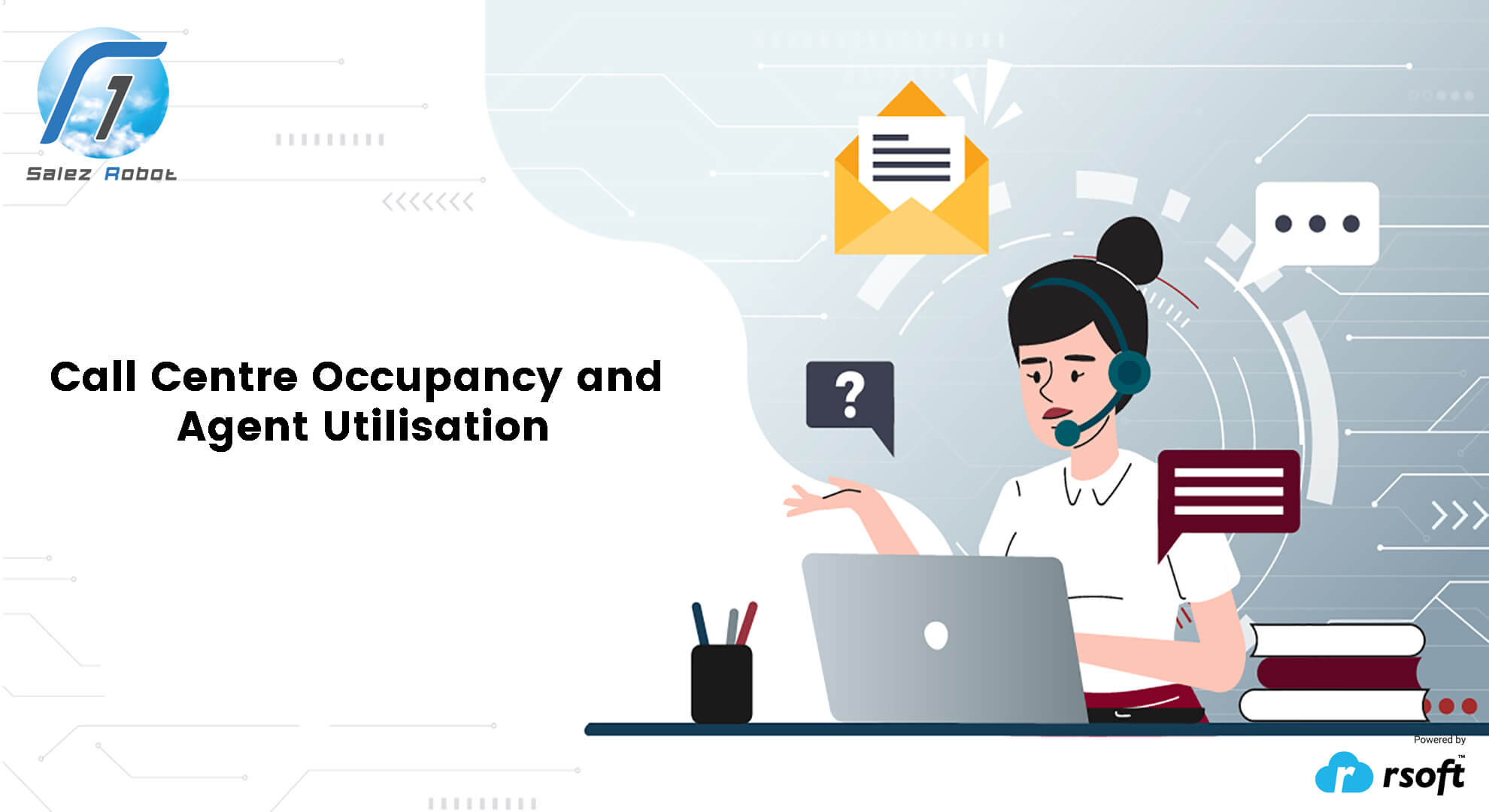Call centre’s employ a range of measures to analyse their workforce's overall effectiveness and identify areas for customer service improvement. Metrics like occupancy and utilisation are interpretations of metrics that are important in managing the staff and the centre. Since these two concepts are sometimes confused, they are fully distinct and necessitate unique computations.
What is Occupancy?
Call centre occupancy is a statistic that measures how busy agents are when they log in. It's given as a percentage and shows how much time they spend on call-related duties vs. idle time or other work. After-call work (ACW), talk time, and hold time are examples of call-related tasks, often known as productive time.
The average Call centre occupancy rate is between 80 and 90 percent. Thus, if a call centre has a 70% occupancy rate, it suggests that agents are spending 70% of their time on call-related tasks. A regular greater than 90% proportion raises the danger of agent burnout, whilst a lower percentage might result in decreased client satisfaction.
What is Utilisation?
In Call centre , one significant distinction between occupancy and utilisation is that occupancy only measures the duration employees are engaged on the floor, but utilisation includes total work time.
Utilisation, like occupancy, is calculated as a percentage. It displays the productivity-to-capacity ratio of agents. As a result, utilisation provides insight into the efficiency of a Call centre’s procedures. Gauging usage might be difficult since the calculation covers actions other than call-related ones. Training, team meetings, and impromptu breaks are a few instances.
What is the importance of measuring Occupation and Utilisation?
Aside from understanding the distinction between occupancy and utilisation in contact centres, RSoft Technologies makes it critical to comprehend why these metrics are vital and how they might affect outsourced Call centre services.
Monitoring occupancy is one method of ensuring that agents do not burn out and continue to work well. For example, a 95 percent occupancy rate implies that mistakes are unavoidable, and hence customer happiness would suffer. A 75% occupancy rate may be considered too low.
Managers can schedule agents more effectively and ensure they are not overworked if they keep a close watch on occupancy rates.
Why Is Call Centre Occupancy Important?

Your occupancy rate is proportional to your workforce numbers. It indicates if your staffing levels are sufficient for the quantity of call centre work available. A high occupancy rate indicates that Call centre agents do not have enough time between calls. They have less time as the temperature rises. This frequently occurs when the call centre is understaffed, there is a brief spike in call volume, or agents take too long to handle after-call tasks.
Excessive interest rates are undesirable. Keeping people on the clock will not necessarily increase contact centre productivity.
Excessive overcrowding might result in:
Alternatively, because of the low occupancy rate, agents have plenty of time between calls. While agents may like having less work to perform, a low occupancy rate leads to a poorer call centre ROI.
There are several reasons for such a low occupancy rate:
The Call centre is overstaffed, or the average call volume has declined for whatever reason.
How is Occupancy Calculated?
All too many contact centres calculate the occupancy rate by adding the total handling time and the available time and then dividing the total handling time by that amount. The formula looks like this:
Total Handling Time x 100 (Total Handling Time + Available Time)
The total handling time in this equation refers to the total amount of time spent on call-related activities by agents. It is vital to ensure that available time does not overlap with hold time or ACW time, as they are already covered by call-related actions.
Why Is Call Centre Utilisation Important?
Despite its vast scope, this statistic will provide you with an overview of how successfully the call centre is operated. Agent utilisation is critical for detecting scheduling errors, analysing performance objectives, predicting workloads, and computing core costs.
A low score might be a red indicator, indicating that agents are either overburdened or under supervised.

An abnormally high score indicates that agents are overworked, do not receive adequate training, are under extreme pressure, and may abandon their jobs as a result of the working environment.
Utilisation Calculation
The computation for utilisation varies based on the call centre; however, it is often something like this:
Total Logged In Time/Total Shift Time multiplied by 100
In terms of mathematics, the distinction between occupancy and utilisation in contact centres is that utilisation estimates include not just the logged-in time agents are available to receive calls, but also the overall shift duration. It is vital to highlight, nevertheless, that total shift time should not include paid breaks, lateness, or absenteeism.
How to Increase Occupancy and Utilisation Rates?

Monitoring call levels at various times of day can assist in identifying busy and quiet periods. Providing self-service options to clients during busy hours can assist in reducing call volumes. During low call volume, managers can then allocate alternative responsibilities to employees or give training.
To boost agent performance, contact centres might turn to Call centre management technologies like RSoft , where agents can execute various activities
more quickly and efficiently when using visual help technologies. Predictive dialers, automated call distributors (ACD), and customer relationship management are just a few examples (CRM).
After understanding the distinction between occupancy and utilisation at a contact centre, you should be able to determine whether customer service concerns require attention. Customer satisfaction will increase as call centre occupancy and usage rates rise.
Conclusion
Therefore, understanding the need and purpose of an occupancy and utilisation tool to help manage and grow your business, it is vitally important to contact RSoft Technologies, who will not only provide the best CRM to offer such benefits and comfortability but also a promising prospect and implementation roadmap


